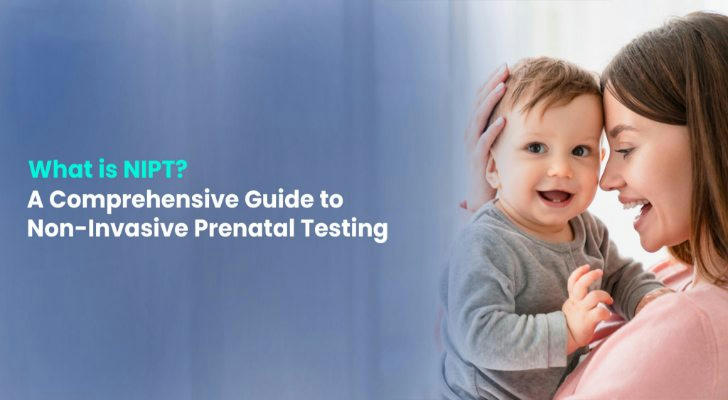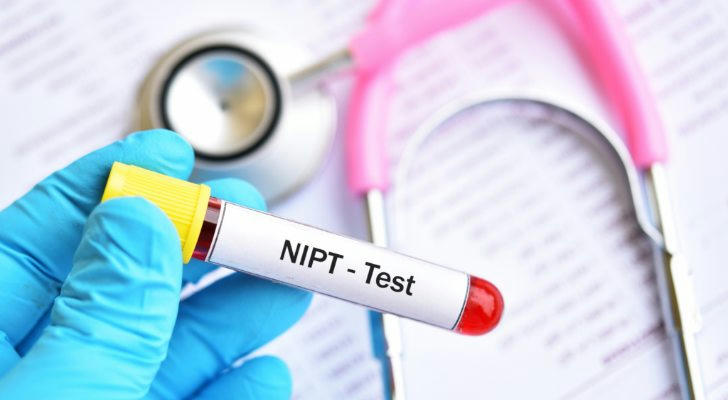NIPT: What Every Expectant Parent Should Know

Pregnancy comes with a mix of excitement and worry — especially when it comes to your baby’s health. Non-Invasive Prenatal Testing (NIPT) is a breakthrough that gives parents peace of mind early in pregnancy by screening for certain genetic conditions.
But what exactly is NIPT? How accurate is it? What does it cost? Let’s break it down in a way that’s simple, clear, and practical, so you can decide if it’s right for you.
What Is NIPT?
NIPT is a safe, non-invasive blood test that analyzes fragments of your baby’s DNA found in the mother's bloodstream. It can detect genetic conditions such as:
Down syndrome (Trisomy 21)
Edwards syndrome (Trisomy 18)
Patau syndrome (Trisomy 13)
Sex chromosome abnormalities (like Turner syndrome)
Baby's gender (optional)
Why It’s Popular:
Safe for Baby: No needles near the baby — just a simple blood draw.
Early Detection: Can be done as early as 10 weeks.
High Accuracy: Over 99% detection rate for common chromosomal disorders.
When and How to Get NIPT
Most doctors recommend NIPT for women who are:
Over 35 years old (higher risk for chromosomal issues)
With a history of genetic conditions
Carrying a baby conceived via IVF
Simply seeking peace of mind
You can get the test through your OB-GYN or prenatal clinic, with results typically arriving in 1–2 weeks.
How Much Does It Cost?
IPT costs can vary widely:

Without Insurance: $800–$2,000
With Insurance: ften partially or fully covered, especially for high-risk pregnancies.
How to Check Coverage:
Call your insurance provider and ask for CPT codes (specific billing codes for NIPT).
Confirm if a doctor’s referral is required.
Ask the lab about payment plans or discounts if you’re paying out of pocket.
NIPT vs. Traditional Tests
| Feature | NIPT | Amniocentesis/CVS |
|---|---|---|
| Invasiveness | Non-invasive (blood test) | Invasive (needle into uterus) |
| When to Test | 10+ weeks | 15–20 weeks (Amnio), 10–13 weeks (CVS) |
| Risk of Miscarriage | None | 1 in 200–500 (rare) |
| Conditions Detected | Chromosomal abnormalities | Chromosomal & genetic disorders |
| Accuracy | 99% for common conditions | Nearly 100% |
Are There Any Risks or Downsides?
No medical test is perfect, and while NIPT is safe, there are limitations you should know about:
False Positives/Negatives:
- Though rare, NIPT is a screening test, not a diagnosis. A positive result must be confirmed with invasive testing (like amnio).
Emotional Impact:
- Unclear or high-risk results can cause stress and anxiety, even if the baby is ultimately healthy.
Ethical Concerns:
- Testing for non-medical traits like gender raises questions about selective pregnancies in some regions.
What You Can Do:
Discuss with your doctor about what to test for and how to handle unexpected results.
Consider genetic counseling for more context.
Real-Life Stories: How NIPT Helps Families
Maria & Sarah’s Story:
Maria was 38 and worried about chromosomal disorders due to her age. They opted for NIPT at 10 weeks, which came back low-risk. "Getting that early reassurance let me enjoy my pregnancy more," she shared.
Sarah’s Experience:
Sarah received a high-risk NIPT result for Trisomy 21 (Down syndrome). "It was overwhelming at first, but confirming it early helped us prepare emotionally and find the right support before the baby was born."
Emerging Trends in NIPT
NIPT technology continues to evolve, offering more insights:
Expanded Carrier Screening: Tests for hundreds of genetic conditions in parents.
Microdeletion Testing: Identifies rare conditions like DiGeorge syndrome.
Lower Costs: As the technology improves, prices are gradually decreasing, making NIPT accessible to more families.
Where to Get NIPT & Resources
Ready to explore your options? Check out these resources:
Major Providers:
- Panorama (Natera): Covers common and rare genetic disorders.
- Harmony (Roche): Known for high accuracy in gender and chromosomal conditions.
- MaterniT21 (Labcorp): One of the earliest and most popular NIPT tests.
Insurance Info:
Visit Healthcare.gov or check with your provider.
Ask your doctor about financial aid programs if needed.
Final Thoughts

NIPT offers peace of mind by giving you early insights into your baby’s health — without the risks of invasive tests. While it’s not a definitive diagnosis, it’s a valuable tool for many parents-to-be. Understanding the benefits, costs, and limitations helps you make an informed decision.
Having a baby is a journey, and testing is just one part of the process. Whatever you choose, remember: You’re not alone. Talk to your doctor, explore your options, and do what feels right for you and your family.
